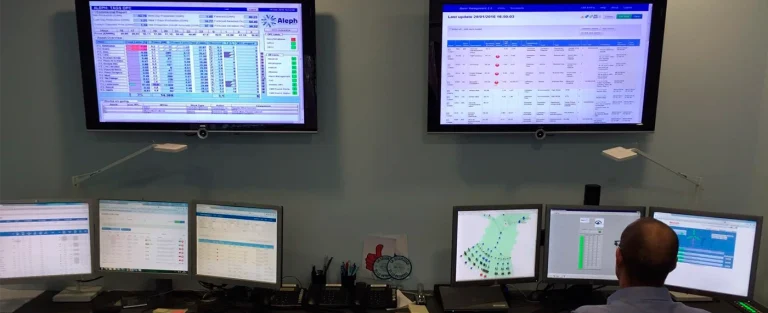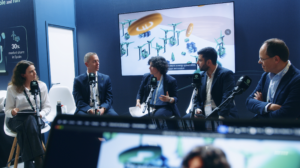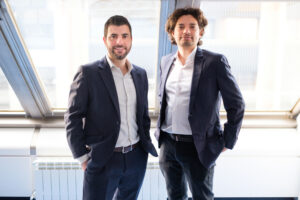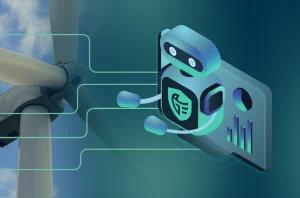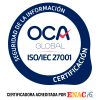The new RWE Innogy Aersa Control Center, which is certified to act as an interface with CECRE since February 2015, connects the 20 renewable energy facilities of RWE with Red Eléctrica de España (Spain). This ensures that wind, hydroelectric and solar farms can inject the energy generated by its 460 MW installed, safely and without penalties.
Green Eagle Solutions, a provider of software solutions for renewable energy companies, has collaborated with the development of RWE’s Control Center, meeting the high standards of quality and safety required by RWE. The center uses the CompactSCADA® technology to integrate power generation facilities that need to be integrated in a Control Center to communicate with CECRE of Red Eléctrica de España (Spain).
«RWE has extensive experience in the generation of renewable energy in Europe; we operate in Spain since 2002, and thanks to the processes and the setup developed in these years, we can now put our capabilities to work for third parties. The services offered go beyond being just a Dispatching Agent with REE, and ensure greater efficiency and more value of the operations carried out by renewable energy plants» says Angel Galisteo, responsible for Operation and Maintenance in Spain and Italy for RWE Innogy. «So we’ve developed a flexible system that can be adapted to the needs of the Customer, and not vice versa, as usually happens, and it’s also a very stable and robust system. Proof of this is that since its launch we have not had any issue on the system.»
The Control Centre of RWE, based in CompactSCADA® technology, meets the requirements of data acquisition, dispatching agent, monitoring and remote control of RWE and third parties plants, ensuring the safety of people, the plant itself and the environment. The system also checks if production values are in line with expectations and allows sending and tracking signals of power regulation, according to the requirements set by REE. This adaptive system contributes to the safe operation of the national electricity system.»When designing a Control Center to act as an interface with CECRE, it is important to accurately understand the needs of operators and the functional specifications set up by REE,» says Alejandro Cabrera, CEO of Green Eagle Solutions. «Our experience in this regard is crucial, but it is also important to have a platform like CompactSCADA®, which ensures its operation, and reaches an availability of nearly 100%.»
One of the great challenges of the Control Center has been getting to be a multi-technology system, that is, it allows the integration of different renewable energy installations regardless of plant type and technology. Today, the Control Center communicates with RWE wind farms that run MADE AE56, Neg Micon NM72, NM48, NM52, NM82, Vestas V90 and Sinovel SL3000 turbines as well as different PLC and SCADA technologies, hydro power plants, photovoltaic and solarthermal power plants.
With just a few clicks you can find all relevant information for each facility, such as wind speed, status of communications and electrical data (active power, real-time reactive power, to avoid penalties, voltage, connectivity) . The Control Center also handles the notification system of incidents, detecting and solving any problems in real time, the regulation signals in a virtual nodet, and it sends commands to the turbine, and reports relevant indicators of the facilities.
Among the main features of the Control Center, we can list the following:
- Operation, monitoring and real time control of both production facilities and electrical infrastructure (substations and lines), with centralized information and 10-min measurements in real time, status and alarm logbook.
- Dispatching Agent: Reception of signals of active and reactive power. Optimization of the generation and increased efficiency by applying curtailment orders in the portfolio (virtual knots) and not by individual facility, and negotiation with the system operator the best conditions to discharge facilities in the grid, to affect the generating plant the least possible.
- Response to incidents in both the production and the electrical plant, communications, processes and systems, anti-intrusion and fire alarms, theft, etc.
- Discharge management.
- Introduction of unavailability rates in intraday markets to avoid deviations of the daily bids in the market.
- Analysis of performance of the plant (machines and SET), presenting specific action plans and further monitoring of implementation.
- Real-time monitoring of systems, equipment, processes and communications.
- Operation of central databases (Real Time and Historical), in a robust and reliable way. Redundancy and backup systems.
- Interface and web systems adapted to mobile devices.
- The system provides economic estimates based on weather forecasts and market prices published by OMIE.
- Access control to facilities and works management.
- Reporting of relevant indicators.

